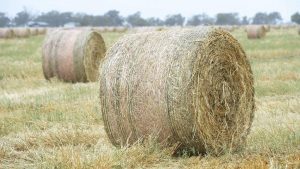Combining eighteen months of generally good feed-growing conditions with a reduction in export demand has seen some ‘headwinds’ for oaten hay prices of late.
When we calculate gross margins for several Wimmera crop options this year and use $150/t as the farmgate price for oaten hay, we see that hay is indeed our lowest returner at $245/ha.
| Oaten hay returns look particularly paltry when compared to the historically good pricing levels on offer for cereals, canola and pulses. If we assume that there are another $200-$300/ha of fixed costs to come off the gross margin figure, on the face of it, oaten hay could very well be a loss maker this year. |  |


 |
However, when assessing the value of oaten hay in the rotation, we found it misleading to look at the single season result alone. Not only does it pay too much attention to short-lived commodity price cycles, that are often not capitalised on, it does not account for the other benefits of having oaten hay in your rotation. We have tried to put a dollar figure on some of the benefits to provide a fairer comparison. |
Hay in the rotation provides a very effective non-herbicide mechanism of weed control. Without it, growers often need to rely on alternate forms of weed control like weed seed destruction at harvest or running livestock. While very dependent on individual farm or paddock weed problems, recently ORM has completed analysis that showed average gross margins increased by up to $110/ha per annum with optimum weed control over a 15-year period.
With hay being cut in September, the extra soil moisture that can be stored could have up to 0.5t/ha yield benefit to the following season’s cereal crop. At $320/t for wheat, that equates to an extra $160/ha.
| If we consider these weed management and moisture benefits alone, we can add up to $250/ha back into the gross margin calculation which puts oaten hay returns similar to wheat and barley this year – even in this poor pricing environment. | 
|
Other benefits that exist but are highly variable (so we have excluded from gross margin calculation) include the risk management benefits hay can bring by reducing exposure to a frost or a dry spring, or the better utilisation of resources with peak production occurring outside of harvest.
Gross margins are an important tool when calculating farm profitability, but it is equally important to understand the profitability at a farming system level. If you would like more information, contact ORM – Contact Us